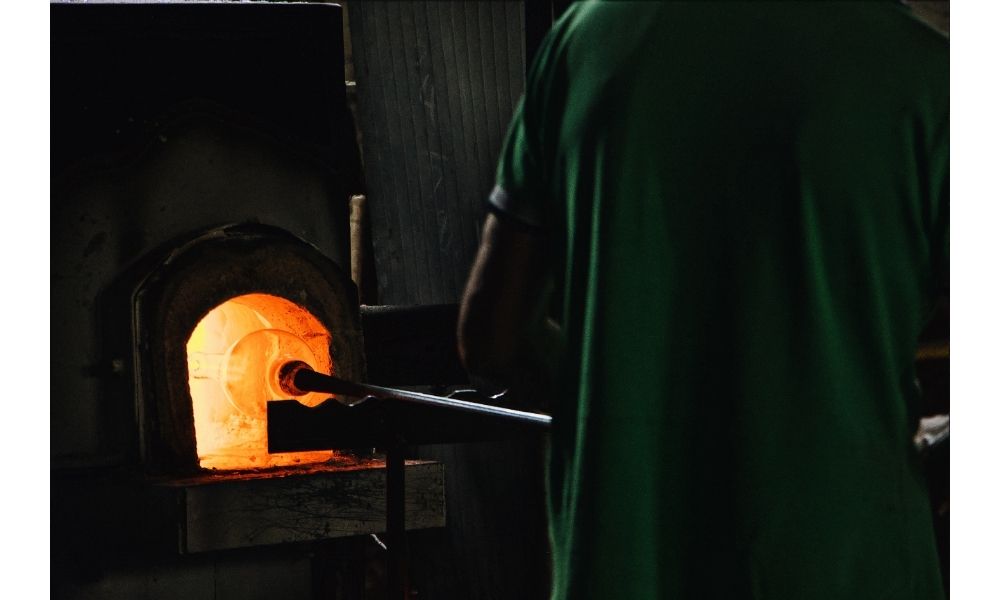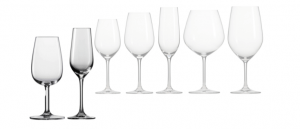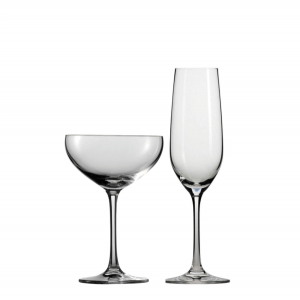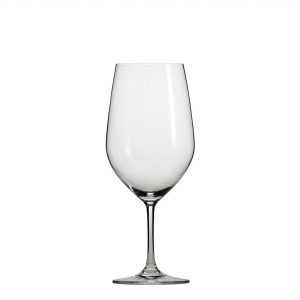$78.95
- For red wine, choose a glass with a larger bowl and wider rim, as this will allow the wine to breathe and release its flavors and aromas.
- For white wine, choose a glass with a smaller bowl and a narrower rim, as this will help to preserve the wine’s crisp flavors and aromas.
- For sparkling wine, choose a flute glass, as the long, narrow shape will help to maintain the wine’s carbonation and highlight its bubbles.
- For dessert wine, choose a smaller glass, as this will allow you to enjoy the wine’s sweetness without having to drink too much.
Ultimately, the best wine glass for you is one that you find comfortable and enjoyable to use. You may want to try different glasses to see which one best suits your needs.
With so many options flooding the markets nowadays, sometimes it feels like you can never find what you are looking for. Here at BestWineGlass.com, we bring together what we feel are some of the best glassware options from all over the world, together in one convenient location, for you and your loved ones to enjoy.
Our glassware selection will fit your every need. Whether you are in need of a high-end, mouth-blown, hand-finished Bottega del Vino Chardonnay crystal glass, or something perfect for outside or the pool where glass is not permitted, like the Govino BPA-free composite Shatterproof glass. BestWineGlass.com has what you need.
Cheers,
BestWineGlass.com
]]>During the 17th and 18th centuries, the tradition of cut crystal glass making spread throughout Europe and was particularly popular in England and France. In France, famous glass makers such as Baccarat and Lalique became known for their intricate designs and exceptional craftsmanship. Today, cut crystal remains a symbol of luxury and is often used in high-end table settings and decor.
]]>
Have you ever found yourself wondering why some people refer to some wine glasses as crystal? What is the difference between crystal and plain old regular glass anyway? Why do they say crystal glassware is better for wine and beverages?
We should all be fairly familiar with glass, a solid and transparent material that is used in all facets of our daily lives. Made from natural raw materials (sand, soda ash, and limestone) that are melted at very high temperature to form glass. At high temperature glass is structurally similar to a liquid, but at ambient temperature it behaves as a solid. As a result, glass can be poured, blown, press and molded into plenty of shapes.[4]
This made glass ideal to hold beverages such as wine, where it can be blown into different shapes to maximize the aroma and taste of the particular wine, and is also transparent so the colors of the wine can be observed.
Not all glass is created equal. Traditional glass has its limitations, mold it too thin and it becomes brittle and weak, and limitations cap the clarity of traditional glass’ transparency. People soon came to learn by adding lead oxide to the glass making process, glass became much stronger and showed improved clarity.[5] This clearer and sharper looking glass often reminded people of diamonds, and the term ‘crystal glass’ started being used. Glasses with lead oxide content first showed up in Mesopotamia, considered the birthplace of the glass industry. The earliest known example is a blue glass fragment from Nippur dated to 1400 BC containing 3.66% PbO.[3] Lead glass occurred in China during the Han-period (206 BC – 220 AD). There, it was cast to imitate jade, both for ritual objects such as big and small figures, as well as jewelry and a limited range of vessels. Since glass first occurred at such a late date in China, it is thought the technology was brought along the Silk Road by glass workers from the Middle East.[3] Lead crystal glassware was formerly used to store and serve drinks, but due to the health risks of lead, this has since become rare.
Modern crystal glass was born. No longer using lead oxide, modern crystal glass is made with a variation of barium oxide, zinc oxide, or potassium oxide. Lead-free crystal has a similar refractive index to lead crystal, but it is lighter and it has less dispersive power.[1] Crystal glasses are stronger therefore can be made thinner and lighter than traditional glass, enhancing your experience when drinking your favorite wine regardless of the type. Glasses made with traditional glass are heavy and bulky, whereas crystal glasses are clearer and lighter.
Many modern glassware companies deploy further techniques to strengthen their glassware. Schott Zwiesel for example, introduced it’s Tritan technology. By composing glass with Titanium and Zirconium instead of lead, Schott Zwiesel in collaboration with the University of Erlangen in Germany, created a new superior crystal- Tritan Crystal. The Tritan composition, along with new manufacturing technology exclusive to Schott Zwiesel, delivers a superior Crystal Glass in its appearance, durability, and design. [6]
With modern technology, glassware companies around the world are constantly innovating and improving peoples ability to enjoy their favorite wine to the fullest. Here at BestWineGlass.com, we are constantly seeking to showcase the best glassware technology the world has to offer, in one convenient location for you and yours to enjoy.
Cheers,
Zach
Works Sited
[1] “About Lead-free Crystal”. Archived from the original on 21 January 2016. Retrieved 22 December 2011.
[2] “Council Directive 69/493/EEC of 15 December 1969 on the approximation of the laws of the Member States relating to crystal glass”.
[3] Tait, Hugh, ed. (2004). Five Thousand Years of Glass. University of Pennsylvania Press (orig. British Museum Press). ISBN 978-0-8122-1888-6.
[4] https://www.glassallianceeurope.eu/en/what-is-glass#:~:text=Glass%20is%20made%20from%20natural,temperature%20it%20behaves%20like%20solids.
[5] Benvenuto, Mark Anthony (24 February 2015). Industrial Chemistry: For Advanced Students. Walter de Gruyter GmbH & Co KG. ISBN 9783110351705.
[6] https://www.crystalclassics.com/tritan/tritanstory.htm
]]>Glasses are the most important tool for our enjoyment of wine. Understanding how a wine glass affects the taste of our wines is important for enjoying any wine to its fullest potential. Preferences may vary, but there are predictable preferences that most of us will share. At BestWineGlass, we believe the most important aspect of a glass is how it makes the wine taste.
Setting aside the look (aesthetics) of the wine glass, the feel of the wine glass in our hand and even the cost of wine glasses and focusing our attention strictly on how different types of wine glasses affect the taste of our wines requires us to take a closer look at the anatomy of different types of wine glasses. There are seven basic types of wine glasses in common use today. From left to right they are, Port, Sherry, White Wine, Red Wine, Champagne, and two specialized red wine glasses, the Burgundy and the Bordeaux. The obvious differences in size and shape of different types of wine glasses make each one more suitable for different types of wine.
Specialty Glasses
The first two wine glasses are the Port wine glass and the Sherry wine glass. These specialty wines are very potent and typically consumed slowly in small amounts. The port wine glass is small because of the way port is consumed slowly in small amounts, but still large enough to swirl and capture aromatics that affect how the wine tastes. Sherry tends to be more acidic and higher in alcohol. Getting a good full breath of these hyper-sweet alcohol-rich aromatics tends to overwhelm the palate and make the wine hard to taste. The small narrow sherry glass tends to minimize the effect of sherry’s smell on it’s taste and allows the drinker to taste sherry’s subtle fruits and minerals without overwhelming one’s senses. This is why the sherry glass also makes a perfect tequila glass for tasting the finest Tequilas in the world.
White wines are generally less aromatic than red wines and usually taste better at cooler temperatures. White wines tend to have very narrow ranges of temperature at which they taste best, so serving them in smaller amounts from a larger container better able to hold its ideal temperature longer is of significant benefit. The best types of white wine glasses are 9-14 oz. It’s common to use a glass at the smaller end of this spectrum, say 9-11oz., as a “white wine glass” while using a glass at the larger end of this spectrum, say 12-14oz. as a “red wine glass.” This is not unreasonable for beginners or those with limited storage space and we sell a combo “Red/White” set of wine glasses for exactly this reason. However, we feel that this “standard” red wine glass is better for fuller-bodied, richer, bolder white wines that present stronger aromatics like full, rich and complex Chardonnays. In this way, the Red/White pair of glasses really represents the different wine glass types for the full spectrum of white wines you might enjoy. A survey of major types of white wine will reveal the difference the size of the glass can make in side-by-side comparisons.
Sparkling Wine Glasses
The fifth glass pictured needs little introduction. The “champagne flute” has become so closely associated with Champagne that few people realize that there was ever a different style used for “bubbly.” The coupe or “saucer” style was more in vogue when traditional French Champagne was only lightly bubbly. Whether enjoying a true Champagne or any other “sparkling” white wine, today’s versions tend to be extremely effervescent and are also drank ice cold. The small narrow glass is best for preserving both the effervescence and the temperature longer. Many sparkling wines are only lightly effervescent and often enjoyed at somewhat higher temperatures. Sparkling reds like Lambrusco should be enjoyed from larger types of red wine glasses and sparkling Rose’ wines should be enjoyed from smaller types of white wine glasses.
Finally, we come to the most distinctive types of wine glasses in the set. of seven basic wine glasses you must have. The sixth and seventh glasses pictured above are types of red wine glasses that any real wine lover becomes familiar with pretty quickly. These are the “burgundy” and the “bordeaux” respectively. They’re named for the famed Burgundy and Bordeaux wine-making regions in France. Both types of red wine glass are large enough to capture the wide variety of complex aromas that come from red wines.
The Burgundy Glass
The bowl of the “burgundy” glass is wider, shorter and more dramatically tapered. This shape better captures the complex aromas of the world’s best lighter red wines. The Burgundy Region of France is known for originating the best example of complex, lighter and more fruit-forward red wines like Pinot Noir. The large surface area of this glass allows each swirl to produce a large volume of aromatics and the relatively narrow rim captures them to be focused on the nose very intensely while drinking. Making it easier to smell the distinctive aromatics of a world class Pinot Noir so dramatically affects its taste that you would hardly recognize it as the same wine from a different glass in side-by-side tasting comparisons. The Burgundy glass so thoroughly captures wine aromatics and focuses them on the drinker’s nose that many are led to wonder why this is not the only type of wine glass ever needed to enjoy every wine.
Many people do think the Burgundy is the only glass they need, especially for all types of red wines. However, “more” is not always better. The exclusive use of this larger glass completely ignores the use of size and shape to better control and deliver the correct aromatics, in the correct amounts and at the correct temperature to best showcase each type of wine given each drinkers preferences. Close attention to all these important factors will help you find the correct wine glass for your enjoyment. Try your favorite fruit-forward, less-dry Pinot Noir in its correct burgundy glass. Really pay close attention to the smell and to the taste, then pour the exact same wine into your white wine glass and see how different it is immediately. Try even the larger white wine glass (the generic “Red Wine” glass) and see if it’s any better. It won’t be much better. Pour the rest back into the burgundy glass and stop torturing yourself.
The Bordeaux Glass
Perhaps the best example of why different types of wine glasses, especially different types of red wine glasses, is so important is to really experience the uses and value of the Bordeaux wine glass. Just like the burgundy glass originated along with the wines it presents best in Burgundy, France, the Bordeaux glass evolved to best present the full-bodied, richest and most aromatic red wines, like Cabernet Sauvignon, produced for many hundreds of years and perfected in the Bordeaux Region of France. As we said before, more is decidedly not always better. Many of these rich reds are also high in tannins. That’s the bitter taste and tart “pucker” factor you experience in many richer red wines.
The Bordeaux glass also has a large bowl. Like the burgundy, this enables the collection of a large amount of these aromatic compounds when you swirl. The difference with the Bordeaux is that the smaller surface area relative to the circumference of the rim tends to minimize your experience of some of the more acidic compounds, especially tannic acids common in red wines and even sometimes added as clarifying agents in the final production of the wine. Compare your fully rich, bold Cabernet Sauvignon enjoyed in the Bordeaux glass to what it’s like in the burgundy glass and you’ll see what a difference these glasses can make.
Any avid wine enthusiast will notice many of the differences using the correct glass makes in enjoying different types of wines. The more one consciously, purposefully experiments with glassware, temperature, aeration and even food pairing the more they will be rewarded with an increasing ability to find immense pleasure in the subtleties of many more types of wine. Enjoy! Never hesitate to give us a call if you have questions or anything at all we can help you with. (312) 981-9127
Cheers!
Alana


















